[fusion_builder_container hundred_percent=”no” equal_height_columns=”no” menu_anchor=”” hide_on_mobile=”small-visibility,medium-visibility,large-visibility” class=”” id=”” background_color=”” background_image=”” background_position=”center center” background_repeat=”no-repeat” fade=”no” background_parallax=”none” enable_mobile=”no” parallax_speed=”0.3″ video_mp4=”” video_webm=”” video_ogv=”” video_url=”” video_aspect_ratio=”16:9″ video_loop=”yes” video_mute=”yes” video_preview_image=”” border_size=”” border_color=”” border_style=”solid” margin_top=”” margin_bottom=”” padding_top=”” padding_right=”” padding_bottom=”” padding_left=””][fusion_builder_row][fusion_builder_column type=”1_1″ layout=”1_1″ spacing=”” center_content=”no” hover_type=”none” link=”” min_height=”” hide_on_mobile=”small-visibility,medium-visibility,large-visibility” class=”” id=”” background_color=”” background_image=”” background_position=”left top” background_repeat=”no-repeat” border_size=”0″ border_color=”” border_style=”solid” border_position=”all” padding_top=”” padding_right=”” padding_bottom=”” padding_left=”” margin_top=”” margin_bottom=”” animation_type=”” animation_direction=”left” animation_speed=”0.3″ animation_offset=”” last=”no”][fusion_text columns=”” column_min_width=”” column_spacing=”” rule_style=”default” rule_size=”” rule_color=”” hide_on_mobile=”small-visibility,medium-visibility,large-visibility” class=”” id=”” animation_type=”” animation_direction=”left” animation_speed=”0.3″ animation_offset=””]
USA Radar and Laser News Articles
Mar 15, 2007 – NIWOT, CO –
California, Santa Cruz – courtesy Daniel Lopez, Sentinel staff writer. CHP officers armed with Lidar devices. Drivers who like to get on the gas pedal should beware. Officers of the California Highway Patrol in Santa Cruz County have a new tool to help them more accurately catch speeding motorists than radar. The hand-held device known as lidar, short for Light Detection and Ranging uses a light beam and creates a smaller range of field for officers to zoom in on cars than radar systems that emit radio waves. “You can pick out one car in a group of five and pick out that one car,” CHP officer Grant Boles said Thursday during a demonstration of lidar along Highway 1 near La Selva. A scope on the lidar device allows officers at a stationary point to train the infrared light beam on a target up to 4,500 feet away and measure its distance and traveling speed. A red dot only visible through the scope allows officers to remain trained on a specific car. The light beam from the lidar reflects off the target and sends a reading back to the device. Cpl. Mike Ridgway said lidar has been used by traffic officers of the Watsonville Police Department for about five years. Though the technology has been available to a number of law enforcement agencies for the past few years lidar only recently became available to the CHP because of funding, Boles said. “It’s just a great tool and it removes a lot to the variables and questions radar leaves,” Ridgway said. At a distance of 1,000 feet a radar device can read anything in a width of 210 feet, Boles said. At the same distance, the lidar beam can focus on an area just 3 to 4 feet wide. “You have pinpoint accuracy with it so without a doubt that’s going to be the car,” Boles said of lidar. “Before you really couldn’t say which car was speeding in a group.” Ridgway said lidar devices are also helpful to officers investigation traffic collisions allowing them to electronically measure distances instead of having to use a tape measure. “You can just stand on a curb and get your measurements,” Ridgway said. Still lidar is more generally used for speed enforcement. Boles said drivers can expect to see lidar used during commute traffic, in school zones and other areas with heavy traffic where radar is more difficult to use. To issue speeding tickets with the use of lidar, CHP officers must complete eight hours of classroom training and do a field exam where they must judge the speed of motorist within 5 miles of their speed with just the naked eye. An instructor verifies the officers guess with radar or lidar, Boles said. The Santa Cruz County CHP office has four of the $3,000 devices and one or two officers are certified, Boles said. The entire staff should be certified on the next few months when scheduling allows and more devices become available, Boles said. Radar devices mounted in patrol cars that can gauge the speed of cars moving in opposite directions on a road will remain in use, Boles said. Contact Daniel Lopez at [email protected] Conneticut, Avon – Surge in Tickets In January, Avon, Conn., which typically has only five or six officers on duty to handle all police matters, began teaming up with eight other central Connecticut towns to target traffic violators. It borrows a handful of officers to do nothing but give out tickets. The result: Some 50 to 60 traffic tickets are handed out a day, up from the fewer than 10 that are normally issued, says police chief Peter Agnesi. Police in Utah, New Mexico and Oregon have also led ticketing campaigns in the past year. Perhaps the most popular new ticketing tools are the cameras, which are set up at intersections or alongside the road to catch both speeders and people who don’t stop properly at red lights. The city then mails the tickets to the car owners. In the past year alone, the number of cities with these photo speed cameras has increased to about 100 from 70, according to the two companies that sell most of the devices in the U.S., Affiliated Computer Services Inc. based in Dallas and Redflex Traffic Systems, Inc., of Scottsdale, Ariz. The list of cities includes everywhere from Paramount, Calif., and Medford, Ore., to bigger cities like Albuquerque, N.M., and Providence, R.I. The city of Baltimore plans to install 18 more red-light cameras on top of the 47 it already has, says David Brown, spokesman for Baltimore City Department of Transportation. Florida, Gainsville – Bill would punish radar detector owners, Courtesy of www.Gainsville.com By ALICE WALLACE, Sun staff writer, February 28. 2007 Florida Sen. Steve Oelrich, R-Cross Creek, hopes that a bill he introduced to the state Senate Tuesday will make it harder for motorists to speed on Florida’s roads. Senate bill 2228 aims to make using a radar detector a secondary noncriminal traffic infraction — which means if a motorist is pulled over for another offense and is found to be using a radar detector, he could be ticketed. “This is not a bill intended for people who are out there driving 5 mph over the speed limit,” Oelrich said. “This is for the people you see on the interstate going 80, 85, 90 mph.” With his background in law enforcement, including 14 years as Alachua County Sheriff, Oelrich said he has seen the problems associated with excessive speeding and he believes this bill could make it harder for speeders to evade law enforcement. “Radar detectors are designed to try to avoid the speed laws of the state of Florida,” Oelrich said. “It doesn’t answer your phone. It doesn’t play music. It’s got one thing in mind, and that’s so you can defeat the law and break the law.” Oelrich said nine other states have passed similar measures in regards to radar detectors, including Virginia and Illinois. Lt. Mike Burroughs with the Florida Highway Patrol said his agency would fully support any law against radar detectors. “Currently, radar detectors are illegal in commercial motor vehicles,” Burroughs said. “We feel that radar detectors should also be prohibited from being utilized in any vehicle because we feel it shows an intent to speed.” Burroughs said he has heard countless stories from his fellow troopers about motorists who get angry at their radar detectors after being caught for speeding, throwing them out the window or smashing them for failing. “Anecdotally, we find that drivers with more citations on their driving record tend to be the drivers who are utilizing radar detectors,” Burroughs said. “They’re not changing their habit, they’re just trying to find a way to get less tickets.” Oelrich said he and his staff are still looking for someone to sponsor the bill in the state House of Representatives. Alice Wallace can be reached at 338-3109 or [email protected] Florida, Orange County – Cops Set Up Christmas Speed Trap, Courtesy of www.theNewsPaper.com An Orange, County Florida cop disguised himself as an elf to issue between $10,000 and $50,000 in speeding tickets in less than three hours. The only Christmas cheer handed out by Orange County, Florida police this week has been tickets that cost motorists up to $280 plus the expense of increased insurance premiums. A sheriff’s deputy disguised himself as an elf this week to fool approaching traffic with a bag reading “Happy Holidays” in front of him and a Kustom Signals ProLaser lidar gun in his hand. Britain’s top media outlets, including the BBC and Daily Mail newspaper, have found this type of speed measuring device to be “wildly” inaccurate. As many as twenty other officers assisted the elf while hidden out of sight, ready to pull over motorists traveling just a few miles per hour over the 45 limit on the broad, six lane road in perfectly clear and dry conditions. “It’s absolutely terrible,” Tiffany Coy told WFTV-TV after receiving a ticket from the elf. “Why would they do that? It’s not what Christmas is about in any way.” The operation used new computerized ticket printing devices to issue 180 tickets worth between $10,000 and $50,000 in just two hours and 45 minutes. Source: Deputy ‘Elf’ Helps Nab Speeders In Orange County – News (WFTV-TV (FL), 12/8/2006) Georgia – Top Georgia Speed Trap Collects $1000 per Resident, Courtesy of www.theNewsPaper.com Police departments in small northeast Georgia cities are using speeding tickets to generate up to $1000 per resident in annual revenue. For the third year in a row, cops in Pendergrass, Georgia earned the state’s speed trap record by collecting $1012 in cash for each of the city’s 479 residents. The $485,011 prize came from seizures, fees, and speeding tickets in 2005. Motorists passing through on their way between Athens and Gainesville provided the lion’s share of the money. Other Georgia cities generated higher profit levels, but none could match the per capita take of Pendergrass. Nearby Braselton came in at number two with $713,898 in revenue, or $363 per resident. Atlanta collected $37.9 million, or $90.46 per resident. Article Excerpt: Top Northeast Georgia Speed Traps 2005 CITY POPULATION REVENUE PER CAPITA Pendergrass 479 $485,011 $1,012.55 Braselton 1,966 $713,898 $363.12 Arcade 1,912 $500,677 $261.86 Madison 3,781 $460,065 $121.68 Cornelia 3,704 $303,939 $82.06 Hoschton 1,440 $114,332 $79.40 Greensboro 3,384 $221,413 $65.43 Comer 1,141 $51,364 $45.02 Social Circle 3,810 $139,287 $36.56 Monroe 11,903 $422,805 $35.53 Maysville 1,495 $47,309 $31.64 Winder 12,083 $283,060 $19.70 Toccoa 9,225 $96,148 $10.42 Figures from the Georgia Department of Community Affairs Source: Pendergrass again top collector (Athens Banner-Herald (GA), 8/15/2006) Illinois, Chicago – Oct 10, 2006 6:05 pm US/Central New Laser Guns Used To Target Chicago Speeders New Laser Gun Uses LIDAR Technology To Catch Lead Feet Rafael Romo Reporting, (CBS) CHICAGO Chicago police have a new way to find out if drivers are going too fast. CBS 2’s Rafael Romo reports that the new technology that could lead to an increase in tickets. The new tool in the department for traffic enforcement is a speed gun that uses laser technology instead of radar to catch people speeding. The device is called LIDAR, and police say it’s the most accurate speed gun they’ve ever had. Eventually, it will read license plates as well. “We can pinpoint which car we would like to get the speed from by looking through the viewfinder it shows us on our screen,” said Sgt. Greg Reynolds with the police traffic division. After using the gun three days in one district, traffic officers gave 469 tickets to speeders. But police says it’s not about collecting more revenue for the city. “This is an effort to make our streets safer,” said First Deputy Charles Williams with the city’s traffic bureau. “If individuals out on our public streets don’t want us picking up revenue, it’s very easy — obey the traffic laws.” Each one of the devices cost $3,100, and the Chicago Police Department has already purchased 20 such guns. The goal is to have enough guns for each one of the 50 districts in the city, with a total of 80 guns in the next two months. Officers targeting lead feet will be deployed in areas where speeding is common. New Photo Radar in Scottsdale, courtesy Judy Hedding, http://phoenix.about.com/ If you drive on on Frank Lloyd Wright Boulevard near 77th Street, you’d better watch your speed. Beginning at 9 a.m. on Monday, Aug. 23rd, a new enforcement camera will monitor the speed of motorists in either direction and take a photo of vehicles going above the posted speed limit of 45 mph. A copy of the photo – and a speeding ticket – will be mailed to the registered owner of the cited vehicle. The City of Scottsdale advises that this section of Frank Lloyd Wright has been the site of vehicle collisions associated with excessive speed and has a collision rate higher than comparable streets in the city. The Frank Lloyd Wright camera will bring the number of photo enforcement cameras in Scottsdale to seven. All the other sites are located at intersections and monitor both speed and red-light activity. This is the first permanently installed mid-block photo enforcement camera in the state dedicated to monitoring only speed. The city uses four mobile photo enforcement vans, which are deployed to various locations throughout Scottsdale. Two additional red light/speed detection camera systems are in the planning stages. They are scheduled to begin operation in September at the intersections of Shea and Scottsdale roads and Shea and 90th Street. Statistics indicate the city’s photo enforcement program is an effective safety tool. Before its introduction in 1997, the collision rate in Scottsdale had increased 71 percent in four years. When photo radar became operational, that trend reversed itself. According to the City of Scottsdale, in 2003 there were actually fewer collisions in Scottsdale than in 1996, even though the population has increased by 45,000. Public support for the photo radar program has steadily increased since its inception. A survey completed in January showed 74 percent of Scottsdale residents support photo enforcement and the city’s Focus on Safety program. Illinois, Chicago – Slow Down: That Golfer May Be a Traffic Cop. Police Try Unorthodox Tactics To Catch and Ticket Speeders; Chicago’s Red-Light Cameras By LOUISE STORY, Staff Reporter of THE WALL STREET JOURNAL, July 1, 2004 Some of the millions of drivers hitting the road this holiday weekend will face some new surprises. With budgets under pressure, police across the country are using some unorthodox tactics to ticket people who speed or run red lights. There are several burgeoning categories of enforcement. The most familiar is the cameras that catch speeders and red light runners: These highly effective tools are being deployed at many more intersections across the country. Police are also increasingly teaming up with officers from other towns to blanket a particular area with ticket-writing officials. But in a more unusual approach to law enforcement, policemen are starting to don an array of disguises in order to track speeding drivers without attracting attention. Since November, officers in Wilmington, N.C., have dressed up as golfers looking for their ball at the edge of a golf course and disguised themselves as construction workers fixing street lights. Outfitted with radar guns, they radio ahead to a partner dressed in a normal police uniform, who then tickets the offending drivers. Officers there have adopted the look of a homeless person, wearing a bandana, old Army jacket, and jeans with the knees cut out, a beat-up duffle bag at their side. Illinois, Chicago – Chi town installed the first of 10 red-light cameras in November, says the roads are already safer as a result. One of the cameras that caught 55 violators on its first day of operation now records 39 on average, says Brian Steele, assistant commissioner of Chicago’s Department of Transportation. The city is considering introducing speeding cameras as well, he says. But another effect of the new tactics is that more tickets are being generated. The Wilmington, N.C., police, for example, typically write 34 tickets a day, but that jumps to 60 when they’re using disguises, says Sgt. David Register. Chicago has issued 32,000 tickets just as a result of the new cameras, says Mr. Steele. Iowa – Speed Limit Up, Deaths Down, Courtesy of www.theNewsPaper.com After a year of 70 MPH speed limits, deaths are down in Iowa and average speeds are up just 1.6 MPH. Following last year’s raising of the Iowa’s maximum speed limit from 65 to 70 MPH, the number of road fatalities in the state has fallen. Traffic deaths for 2006 are estimated to be 440 — equal to the number of deaths twenty years ago. Last year, the number of deaths stood higher at 450. Raising the speed limit had a negligible effect on the average speed of motorists on Iowa’s rural interstates. A comparison of speeds from three months before the limit change (April-June 2005) to three months after (July-September 2006) shows an increase of only 1.6 MPH. Despite the good news, the Iowa State Patrol will continue to issue expensive speeding tickets. From July 2005 to July 2006, the force issued 27,000 speeding citations generating up to $3 million in revenue. “One of the things that you are going to be seeing is more use of unmarked cars,” Department of Public Safety spokesman Jim Saunders told the Des Moines Register. Source: Most Iowa traffic fatalities involve one-vehicle crashes (Des Moines Register (IA), 12/31/2006) Maine – The state police tried sticking empty police cars in the highway median to try to get drivers to slow down. But as the cars accumulated dust and dirt, drivers quickly concluded there was not a ticketing threat. The Maine state police have since begun using the officer disguises — but even now, they’re continually on the lookout for new outfits to keep drivers guessing. “I think a lot of them are gimmicky to the point where they don’t work for a long term period,” says Randall Nichols, an officer in the department’s operations division. Also newly popular are “blitzes,” where police from several departments team up on drivers in one town with an unusually high number of cops. That allows towns that are too small to have dedicated traffic officers set up major speed traps. Oklahoma, Moffett – Speed Trap Removed, Courtesy of www.theNewsPaper.com, 2004 As of Wednesday, the town of Moffett, Oklahoma lost the power to issue traffic citations. The Oklahoma Attorney General and Department of Public Safety shut down the notorious speed trap because the town had collected more than half its operating budget from speeding tickets, in violation of state law. In 2004, the town generated 84 percent of its budget from tickets. State police and the county sheriff will now have responsibility for patrolling the four-mile stretch of U.S. Highway 64 that runs through Moffett. Several speed limit changes along the route entrap motorists passing through. Source: Moffett Police banned from patrol (Sequoyah County Times (OK), 12/22/2006) Pennsylvania – State police in Pennsylvania last month also started disguising some officers, dressing them in camouflage and deploying them to wooded areas alongside state roads. In one recent five-hour stretch, they gave out 27 speeding tickets, according to a spokesman from the Pennsylvania Department of Transportation. Law-enforcement officers in Maine, Florida and other states are also using disguises. Police and transportation officials say that at a time when budgets have been cut and some resources diverted to federal homeland-security initiatives, these new tactics present a more effective way to curb aggressive driving and make the roads safer. But some argue that the motivation behind the new vigilance on traffic violations is more revenue-driven than safety-oriented. In some small towns, traffic ticket revenues make up a decent chunk of the budget. Speeders and law-enforcement officials have long played a game of cat-and-mouse, and some of the latest police tactics are a response to drivers catching on to earlier methods. Tennessee, Coopertown – The speed trap Mayor Danny Crosby is back on the job after a public referendum forced him to stand trial for ordering police to target minorities, political enemies and military personnel for speeding tickets. A judge refused to remove Crosby from office, saying that was a decision for the voters of Coopertown. Residents report that speed trap activities have returned to “business as usual.” Virginia, Washington county – Cops Given Financial Incentive Write More Tickets, Courtesy of www.theNewsPaper.com Speed traps on the interstate bring a cash bonus to Washington County, Virginia cops. After the Washington County, Virginia Board of Supervisors voted in 2004 to allow the county sheriff’s office to keep 80 percent of revenue generated from traffic tickets, the number of speeding citations written has skyrocketed. The revenue splitting arrangement allows the sheriff to direct revenue windfall toward overtime pay for deputies as well as a “salary supplement” of $2400 for those who perform well. In 2004, just prior to the new policy, the sheriff’s office wrote 1602 traffic tickets. The following year, the sheriff’s office wrote 10,018 tickets. Most of the tickets were issued to motorists traveling on Interstate 81 with the average charge being 79 MPH — just under the threshold for reckless driving under state law, a charge requiring significant court time and effort to prosecute. The total amount taken from motorists totaled $516,072 in the first year-and-a-half under the revenue sharing deal. This has nearly doubled the county’s cut from from around $60,000 to $135,214 while allowing the sheriff to divvy up $166,000 of the bounty among his deputies. About half of Virginia counties have adopted a similar revenue sharing arrangement encouraging local police to run speed traps on interstate highways. Source: Deputies say speeding tickets worth the effort (Bristol Herald Courier (VA), 3/5/2007) Washigton DC – Alternative to Tax Hike? The District of Columbia, for example, raised more than $85 million from traffic violators in its fiscal year 2002, or about 2.5% of its total revenue that year. But in cities with a smaller tax base, that number can shoot up. In the village of Woodstock, Vt., for instance, income from traffic violations amounts to about 15% of revenues. “You can be ticketing people and that’s extra money for you without having to raise taxes,” says Eric Skrum, spokesman for the National Motorists Association, based in Waunakee, Wis. He says engineering problems, such as overly short yellow-light times, are behind many of red-light violations. Some cities, he says, don’t want to fix the engineering problems because then they’d lose the revenue from the tickets. Miffed Car Owners In some cases, the cameras have created controversy. Some drivers in Chicago, for example, complained that they had received tickets in the mail for violations that occurred when someone else was driving their car. California, one of the earliest states to use the cameras, takes photos of the drivers of the cars as well as the license tags. It charges a fine of between $310 and $361 for drivers who run a red light, and even adds a point to their license. Non-commercial drivers who amass four points from traffic violations of any kind within a year get their licenses suspended Call 1st Radar Detectors in Canada at 250-324-8004 or in the USA at 720-635-3931 to discuss your requirements and we will figure out what what you need for your business or your vehicle, and find a US/Canada installer for you. Regards, John Turner STiR Plus, HP905 Quad Laser Jammer, APC Power Control STiR Plus, HP905 Quad, HP905 Dual and ProDB-2 Dual PhotoBlocker Contact 1st radar Detectors at [email protected] to purchase a radar detectors, laser jammer, radar laser jammer; and a photo blocker on passenger cars, pick up trucks, SUVs, and motorcycles in the UK, USA, Australia, Canada, Europe, South America and New Zealand. |
||||||||||||||||||||||||||||||||||||||||||||||||||
[/fusion_text][/fusion_builder_column][/fusion_builder_row][/fusion_builder_container]
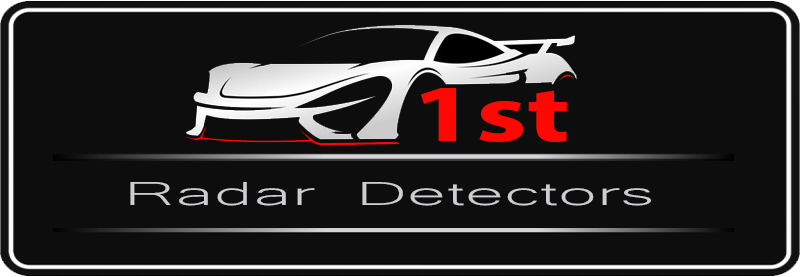
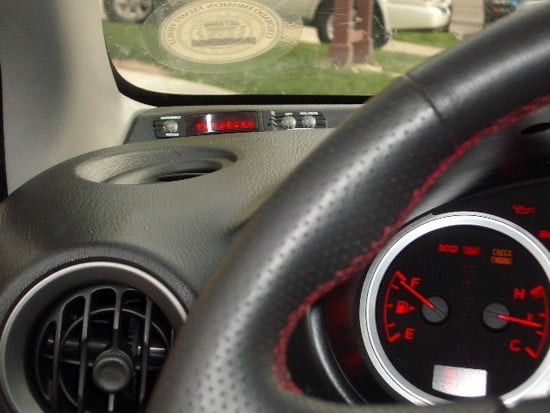
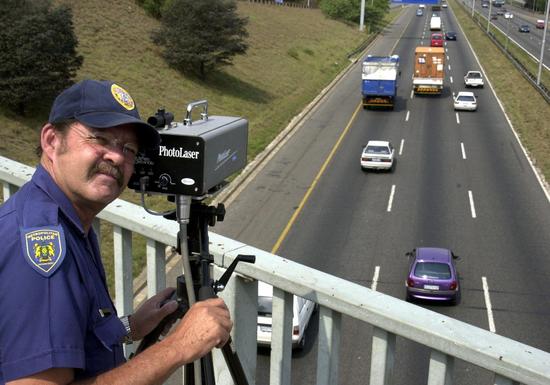
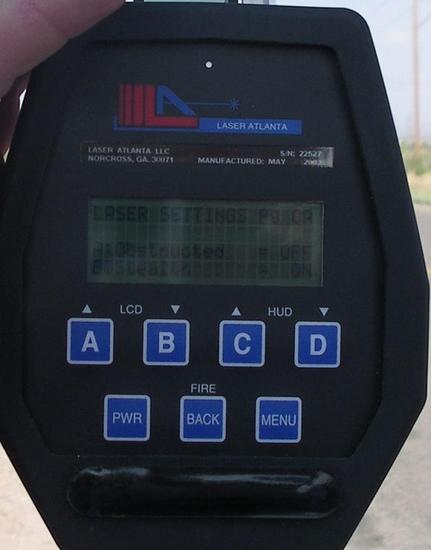

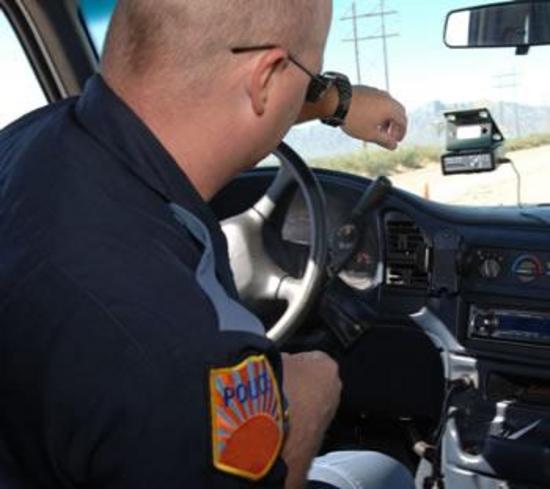
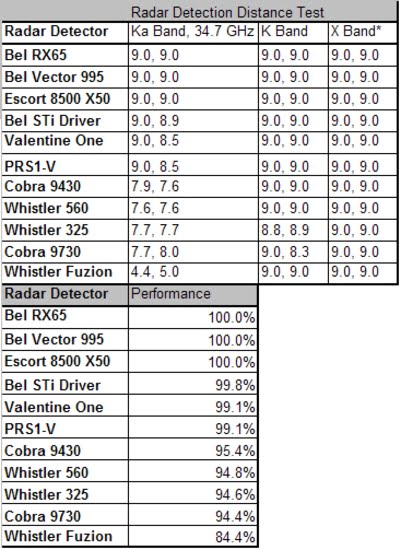

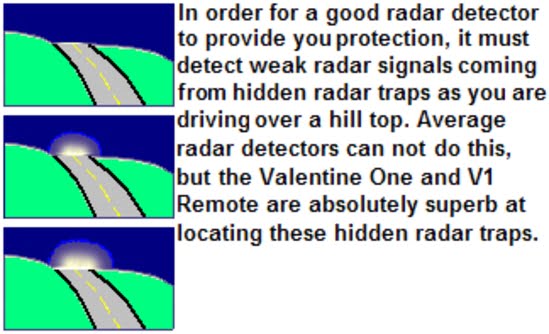
Recent Comments